Matusadona National Park
Matusadona National Park gets its name from the rolling Matusadona hills that form part of its water rich landscape and is the first protected area in Zimbabwe to come under our management.
Matusadona National Park gets its name from the rolling Matusadona hills that form part of its water-rich landscape. Flanked by Lake Kariba in the north, and two perennial rivers, the Ume and the Sanyati, this remote, rugged park presents enormous potential for wildlife and tourism. Proclaimed a National Park in 1975, it was once a conservation stronghold for African elephant and black rhino, and a sought-after tourism destination. However, human pressure and over-utilisation of resources impacted the park severely. In 2019, Zimbabwe Parks and Wildlife Management Authority (PWMA) invited African Parks to assume management of Matusadona National Park – the first in Zimbabwe to fall under the African Parks mandate – and a 20-year agreement was signed with the vision to revitalise the park for wildlife and communities.
At 1,470 km2, this unique and varied landscape consists of undulating hills descending to thickly wooded browse-rich habitat that is interspersed with prolific perennial springs and tall riverine vegetation. Open grasslands surround the northern edge of the park, which borders the vast Lake Kariba. A healthy variety of mammal species occur within Matusadona, including lion, leopard, buffalo, zebra, elephant, hippo and an impressive variety of antelope species. While there are many challenges, African Parks, in collaboration with the PWMA, has begun to revive Matusadona through a holistic management approach of good governance, effective conservation law enforcement, community engagement initiatives, and restoration of wildlife populations through reintroductions.
Matusadona is fast becoming a haven for wildlife, a source of hope for people and a popular tourism destination once more.
Matusadona Highlights
- Ten collared elephant provide vital information about their movement in and around the park.
- Effective park protection through conservation law enforcement and community engagement has seen a noticeable reduction in poaching of both fish and land mammals.
- Support of legal access to and protection of commercial fishing grounds has led to an increase in fishermen adopting sustainable fishing methods, and improved catches.
- Reinvestment into the tourism industry has contributed to job creation and nurtured a pride amongst those who are employed by the park.
- By 2022, the Happy Readers Programme operated in eight schools improving literacy around the park.
On the Horizon
An extraordinary opportunity exists to protect and develop this park in a way that supports both people and wildlife. Through effective management, infrastructure, engagement with local communities, rigorous protection, species reintroductions, and well-managed tourism, the park aims to be restored as Zimbabwe’s premier elephant and rhino sanctuary. Help Matusadona continue this work by donating to African Parks today.
Partners
An extraordinary opportunity exists to protect and develop this park in a way that supports both people and wildlife. Through effective management, infrastructure, engagement with local communities, rigorous protection, species reintroductions, and well-managed tourism, the park aims to be restored as Zimbabwe’s premier elephant and rhino sanctuary. Help Matusadona continue this work by donating to African Parks today.
View Partners